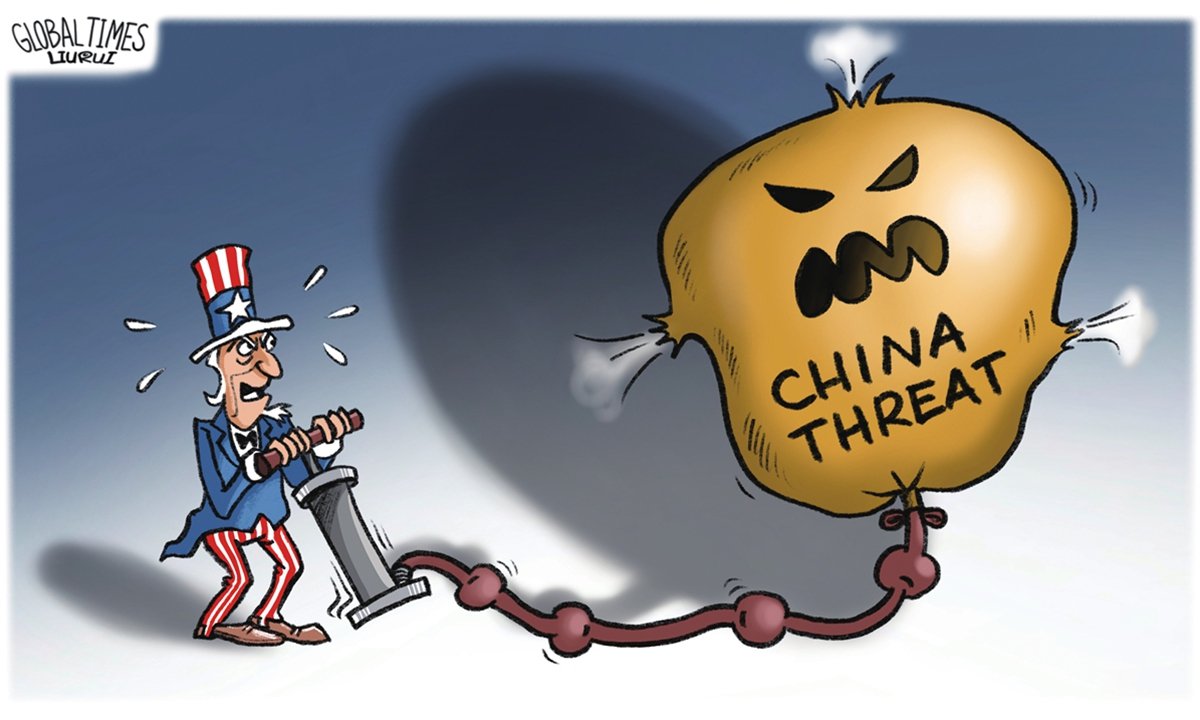In a world where crises continue to erupt in various regions, the United States military has been actively engaged in what some perceive as a campaign to stoke fear and create new tensions in China’s neighborhood under the pretext of the “China threat.” Recent developments indicate an intensification of these military encounters, as highlighted by the Pentagon’s release of footage showcasing over 180 interceptions of US warplanes by Chinese aircraft over the past two years. This alarming figure surpasses the cumulative total of such incidents recorded over the previous decade, raising concerns among US military officials.
As tensions between the United States and China persist, a recent Reuters report suggests that the Pentagon is gearing up to release its annual report on China’s military modernization and defense strategy in mid-October. This report is expected to further underscore the perceived military threat posed by China. Amidst these developments, the thaw in China-US relations has been accelerating. Notably, US Senate Majority Leader Chuck Schumer led a delegation of lawmakers on a visit to China, seen as a significant step towards renewing communication between the two countries. Furthermore, according to a Reuters report from last week, the US Department of Defense has accepted China’s invitation to send officials to attend the Xiangshan Forum, scheduled to take place in Beijing later this month. These events are interpreted as the “latest signs of potentially warming ties between the two countries’ militaries.”
However, amidst these positive diplomatic overtures, the US military seems to be persistently striving to maintain its confrontational stance towards China. In the eyes of some, this approach might be viewed as a face-saving tactic. To this end, the US military has once again turned its attention to the narrative of “China’s People’s Liberation Army (PLA) increasing interceptions of US military aircraft.” Such actions seem designed to justify its continued hostility towards China, resulting in a confusing and contradictory stance from the Pentagon. These mixed signals reflect the broader challenge of achieving smooth military exchanges between the two nations.
Critics argue that the Pentagon’s fixation on such incidents distracts from the broader context of US military activities near China’s borders. For instance, a Chinese technology and intelligence company revealed in February that, in 2022 alone, the US military conducted more than 600 close-in reconnaissance operations in the South China Sea using spy planes. This figure does not even account for similar activities in the East China Sea and Yellow Sea, where US military aircraft and vessels have also been a source of contention. In the eyes of many, it is evident that the United States is displaying coercive intentions and engaging in behavior that can be viewed as a threat to China’s national security.
Moreover, the release of photos and videos depicting PLA interceptions of US warplanes is seen as evidence of the extent to which the United States has encroached on China’s national security and sovereignty. The significant increase in the number of these interceptions underscores the belief that the US has escalated its perceived threats to China, particularly under the Indo-Pacific Strategy. Critics argue that the United States is, in fact, a troublemaker for China’s national security, and assert that China is entirely justified in safeguarding its interests.
In response to growing US military activities in its vicinity, the PLA’s interceptions are portrayed as reasonable and necessary. The Chinese military is said to adopt a strategy of close surveillance and robust deterrence. This approach involves confronting US military assets at a very close distance without resorting to any use of force. The objective is to increase the risk associated with US military operations in the region, raise the cost for the United States in its pursuit of a strategy aimed at containing China, and ultimately undermine American confidence.
Critics argue that the United States, as an instigator in this situation, is adept at employing the “thief crying ‘Stop thief!'” tactic. Behind this behavior lies a perception of long-standing American hegemony and an attitude viewed by some as arrogant and overbearing. The United States has been known to blame other countries for protecting their sovereignty while it continues to pursue aggressive and provocative actions.
These concerns are not limited to the United States alone. Recently, Ottawa has also raised concerns about the PLA’s interceptions. Canadian Defense Minister Bill Blair expressed dissatisfaction with the interception of a Canadian military plane by Chinese fighter jets over “international waters.” In this context, it is suggested that countries like the United States and Canada must recognize that their provocative actions in China’s airspace and territorial waters may lead to strong counteractions and unforeseen consequences in the future.
In summary, the release of footage showcasing numerous interceptions of US warplanes by Chinese aircraft reflects the deepening military tensions between the United States and China. Despite recent diplomatic overtures, the Pentagon’s focus on such incidents continues to contribute to a confrontational atmosphere. Critics argue that the United States must take into account the broader context of its military activities near China’s borders and work towards a more cooperative approach in its relations with China to ensure long-term stability and peace in the region.
Read More:
